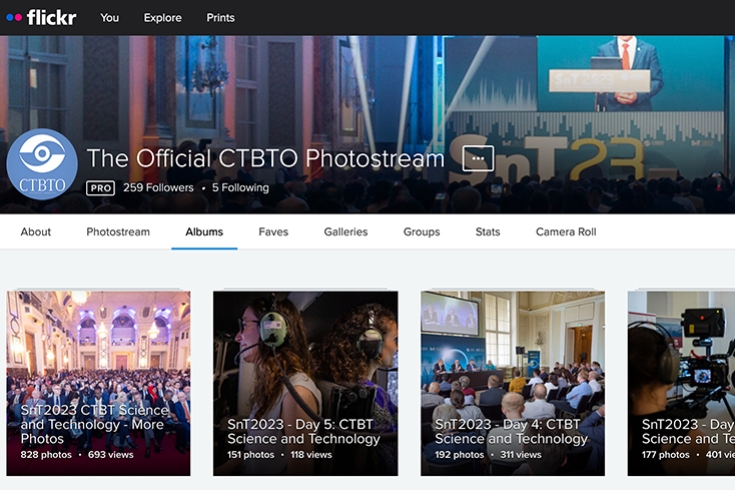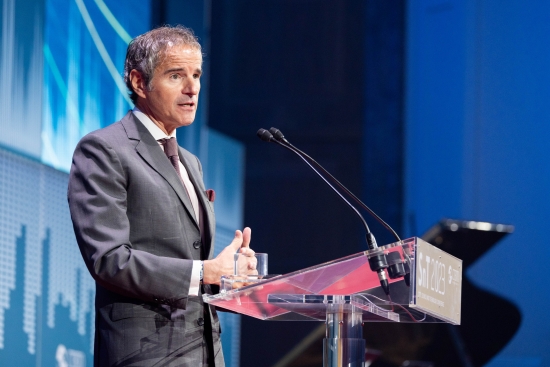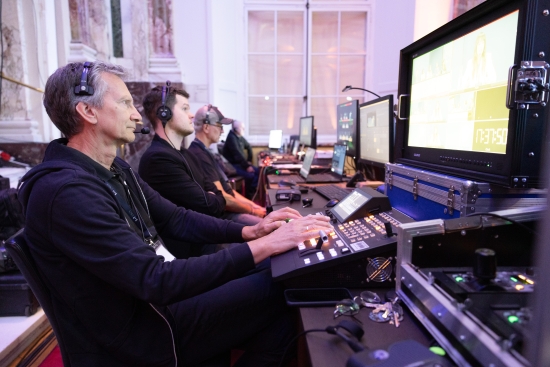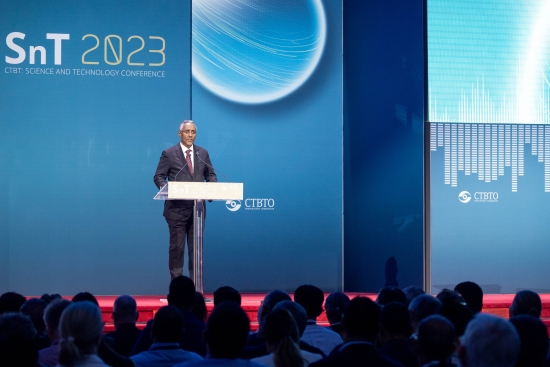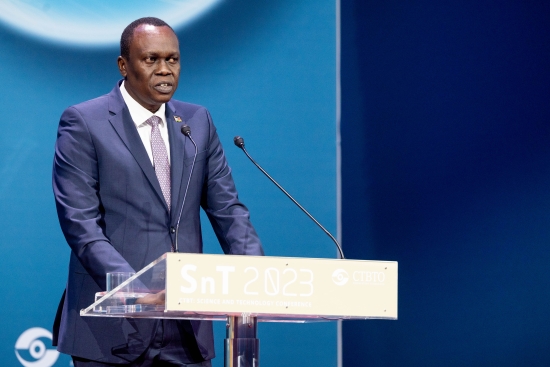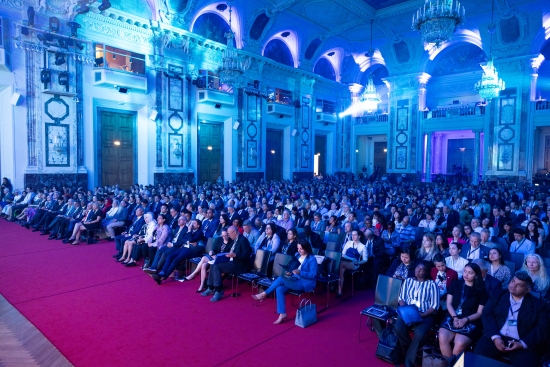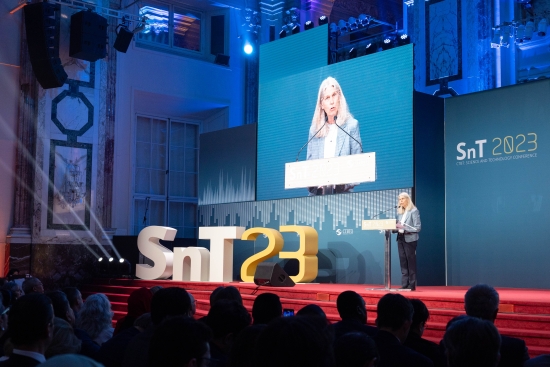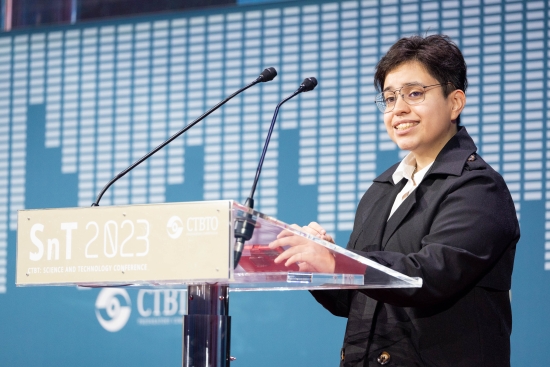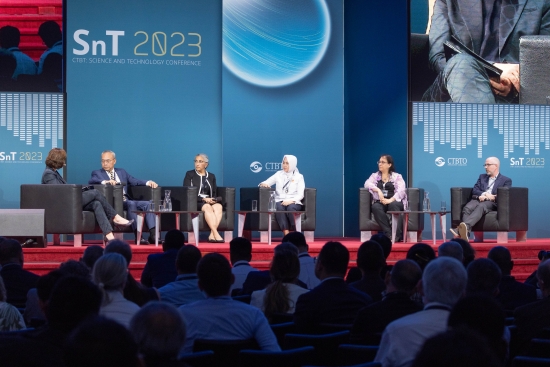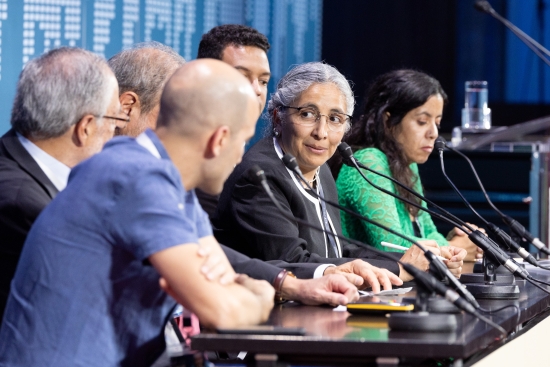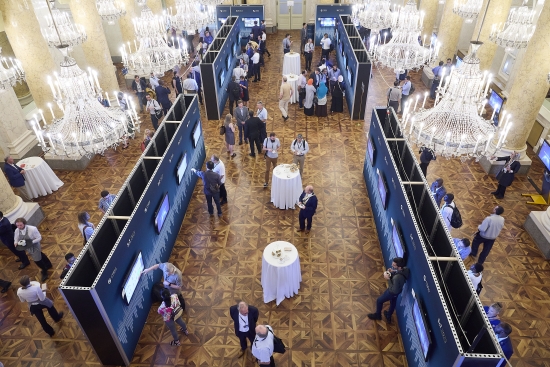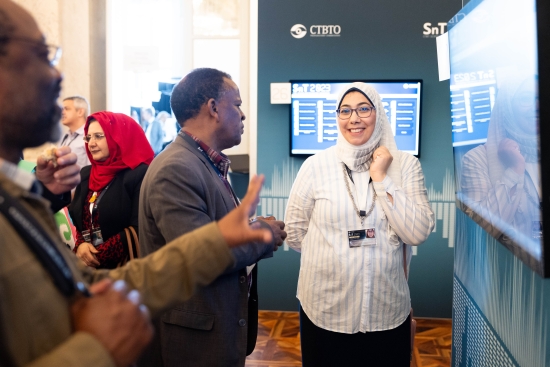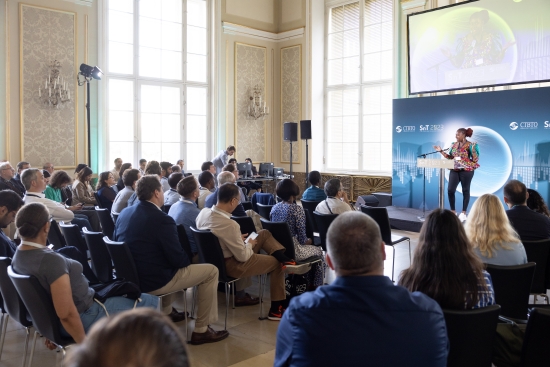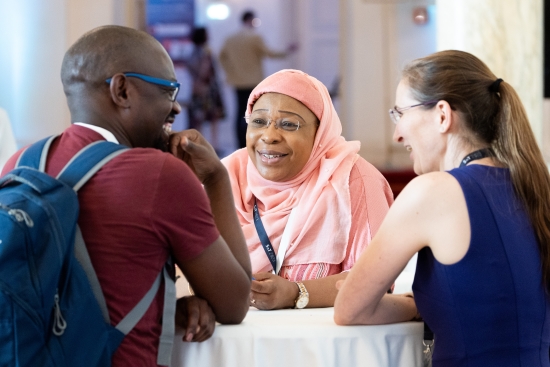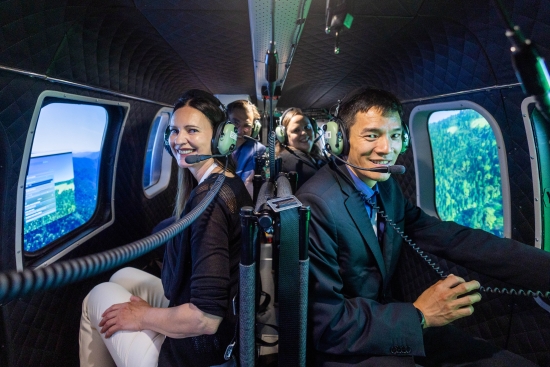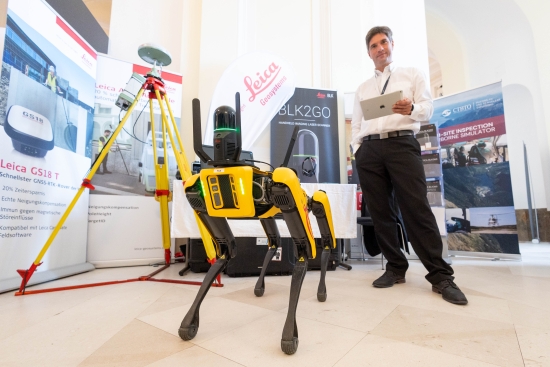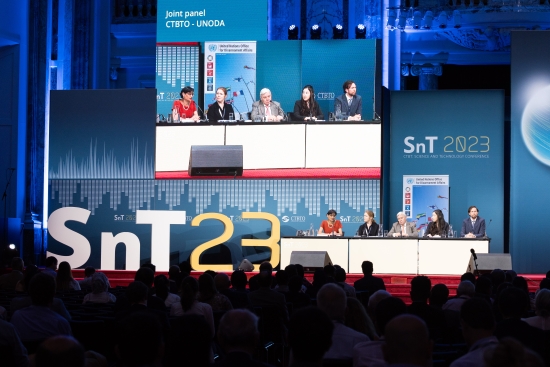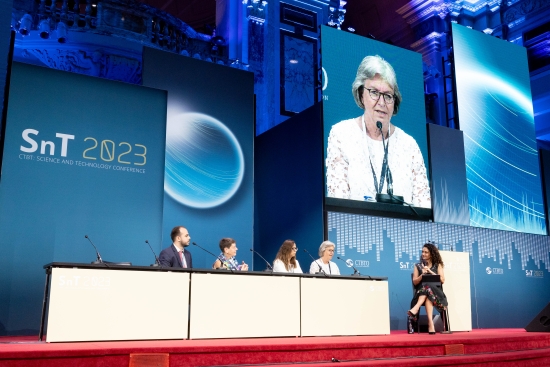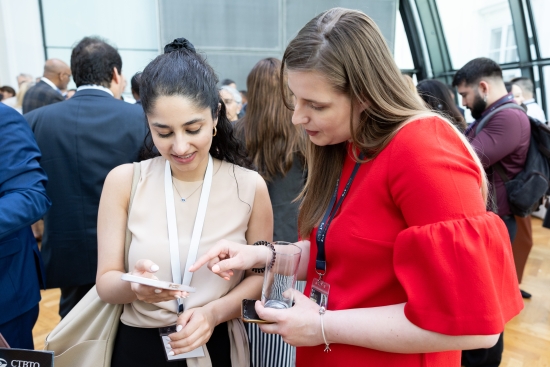CTBTO showcases “Power of Together” in Science and Technology Conference
The CTBT: Science and Technology Conference (SnT2023) wrapped up on 23 June 2023 after bringing together over 2,000 scientists, technologists, academics, and journalists, as well as Member State and civil society representatives from around the world.
The week-long biennial event, held at Vienna's historic Hofburg Palace, offered both in-person and online participation. It focused on recent advancements and methods in nuclear-test-ban monitoring, on-site inspection, and the diverse civil and scientific applications of the data collected by the organization's global monitoring system - established by the Comprehensive Nuclear-Test-Ban Treaty (CTBT).
SnT2023, the seventh edition of the conference, kicked off with a high-level opening, featuring welcoming remarks from the Comprehensive Nuclear-Test-Ban Treaty Organization (CTBTO) Executive Secretary Robert Floyd.
“147 countries [are represented here]. Just think about all those languages and cultures. Yet we have one common language – the language of our internationally agreed scientific standards. This is the ‘Power of Together’. This is what the CTBTO represents,” said the biologist and research scientist.
His words resonated with the audience in the Hofburg’s Festsaal, an imperial hall adorned with ceiling paintings by Alois Hans Schramm, reflecting the motto of “Viribus Unitis” (with united strength).
You and we together represent global teamwork at its finest. We share a simple political and moral goal: No more nuclear tests. And we share the best available technical ways to make sure we reach that goal.
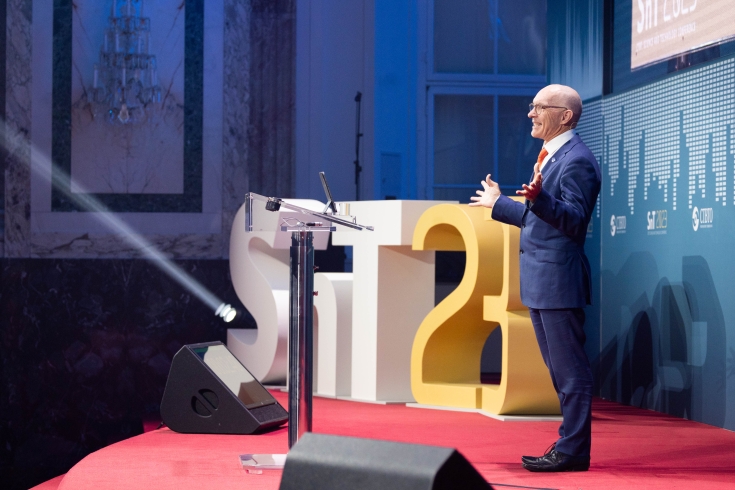
CTBTO Executive Secretary Robert Floyd delivering welcoming remarks
His address to the near-capacity hall, where some 1,000 people were in attendance, was followed by statements of support from a line-up of high-level figures, including Rafael Grossi, Director General of the International Atomic Energy Agency (IAEA), Jill Hruby, Under Secretary for Nuclear Security of the United States Department of Energy and Administrator of the National Nuclear Security Administration (NNSA), and Alinne Olvera Martínez, a youth representative and alumna of the CTBTO Mentoring Programme.
Izumi Nakamitsu, the United Nations Under-Secretary-General and High Representative for Disarmament Affairs, delivered a video message, commending SnT2023 for "serving as a valuable opportunity for representatives to engage one another.”
The power of innovation in different fields and the synergic connections between them can contribute to forming a vision for and help to build a world without nuclear weapons.
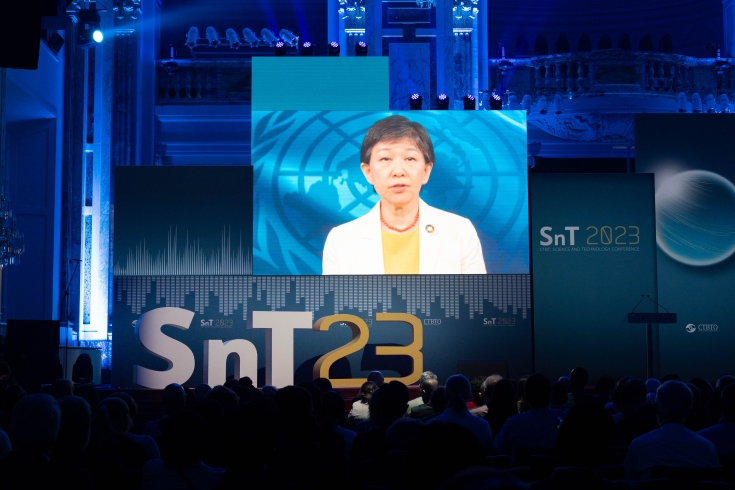
Video message of Izumi Nakamitsu, United Nations Under-Secretary-General and High Representative for Disarmament Affairs
Officials from Somalia and South Sudan expressed their commitment to the Treaty during their remarks, delivering highly anticipated news. Abshir Omar Jama Huruse, Minister of Foreign Affairs, and International Cooperation of Somalia, said, “Signing and ratifying the CTBT is not merely a symbolic gesture, but a testament to our unwavering dedication to global peace and security.”
Mayen Dut Wol, Undersecretary of the Ministry of Foreign Affairs, and International Cooperation of South Sudan, also pledged his country’s support to advance nuclear non-proliferation and disarmament, “[We are] keen to sign and ratify the Treaty as a commitment to international peace and security in the nearest time.”
Since March 2022, the CTBT has received seven ratifications, including from The Gambia and Tuvalu. Dominica's ratification universalised the Treaty in Latin America and the Caribbean. Timor-Leste's ratification resulted in full adherence in South-East Asia, while the ratifications of Equatorial Guinea and São Tomé and Príncipe accomplished the same in Central Africa. Additionally, the ratification by the Solomon Islands marked a significant stride towards full adherence in the Pacific region.
Most recently, both Sri Lanka and Papua New Guinea successfully completed their domestic ratification processes.
SnT2023’s opening session was followed by a high-level discussion on the theme, “CTBT Science and Technology: Benefitting us all.” The panel consisted of five distinguished experts who delved into the various ways the International Monitoring System (IMS) benefits humanity, encompassing both its civil and scientific applications.
One of the speakers, Ambassador Li Song, Permanent Representative of China to the United Nations Office and other International Organizations in Vienna, provided valuable insights into the evolution of the CTBT, having witnessed first-hand the Treaty's initial negotiations and its formative stages.
The CTBT means the start of my career and also, it is a basis for multilateral efforts. This wonderful Treaty sets the norm for a global ban on nuclear testing.
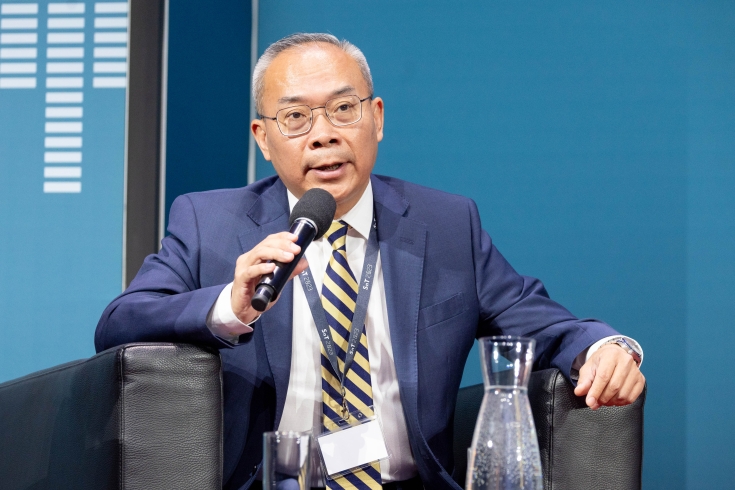
Ambassador Li Song, Permanent Representative of China to the CTBTO speaking
Ambassador Song was joined on the panel by Xyoli Pérez Campos, Director of the IMS Division, Dwikorita Karnawati, Head of the Indonesian Agency for Meteorology, Climatology and Geophysics (BMKG), Antonietta Rizzo, Head of Laboratory for Methods and Techniques for Nuclear Safety of the Italian National Agency for New Technologies, Energy and Sustainable Economic Development (ENEA), and Geoff Brumfiel, Senior Editor and Correspondent of National Public Radio’s (NPR) Science Desk.
The conference's high-level opening stood out as the first SnT conference to offer interpretation in all official UN languages, and special sessions were conducted in Arabic, French and Spanish, highlighting CTBTO's commitment to multilingualism.
Throughout the conference week, attendees were able to take part in a range of technical and scientific panels, lightening talks and e-poster presentations, along with engaging workshops.
Additionally, they had the chance to visit the organization's Operations Centre, the beating heart of the International Data Centre (IDC). This vital hub serves as a central point where experts collect, process, and analyse data from over 300 IMS facilities.
Conference goers could also explore various aspects of an on-site inspection (OSI) through virtual reality tours and a flight simulator.
Each session of the conference was streamed live on the event platform, enabling nearly 500 participants from 112 countries to join virtually. They had the opportunity to interact with attendees at the venue through the SnT conference app, creating a global and inclusive gathering.
The vibrant presence of young participants was also noticeable, with specialised sessions focused on their involvement. These included panels on "Promoting Female and Young Experts in STEM", the "NextGen of the CTBT", and "Empowering the Youth".
Today, youth are dynamic, informed, and socially conscious. It is no longer just about inviting them to participate in discussions; it is about actively listening and including them in the decision-making process.
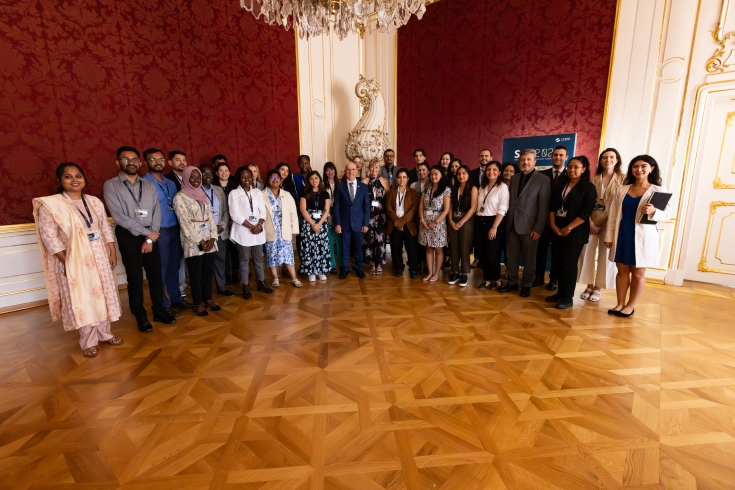
Floyd meeting with members of CTBTO Youth Group (CYG)
As in previous years, the CTBTO continued its tradition of funding journalists from under-resourced news outlets to cover the conference. A diverse group of 11 reporters from Argentina, Bosnia and Herzegovina, Ghana, India, Italy, Namibia, and Pakistan were selected. These journalists represent a range of media platforms, including newspapers, radio, television networks, podcasts, and web publications.
To support their coverage, the CTBTO's Public Information Section organised a series of briefings with staff members, helping the journalists gain a deeper understanding of the organization's legal and technical framework. Additionally, the Section facilitated interviews with various officials to enhance their reporting.
Camil Straschnoy of TELAM, the Argentine national news agency, explained the significance of attending the conference.
I will go back to Argentina full of stories, ready to report on and closely follow the efforts of this organization as it works to bring the Treaty into force.

Group photo of some of CTBTO’s staff who contributed to SnT2023
Through the SnT biennial conference series, the CTBTO aims to forge stronger connections with the scientific and technological community to support the Treaty and advocate for its universalisation. The next SnT will be held in 2025.
You can see photos from SnT2023 on Flickr and view all conference sessions on YouTube.
26 Jun 2023
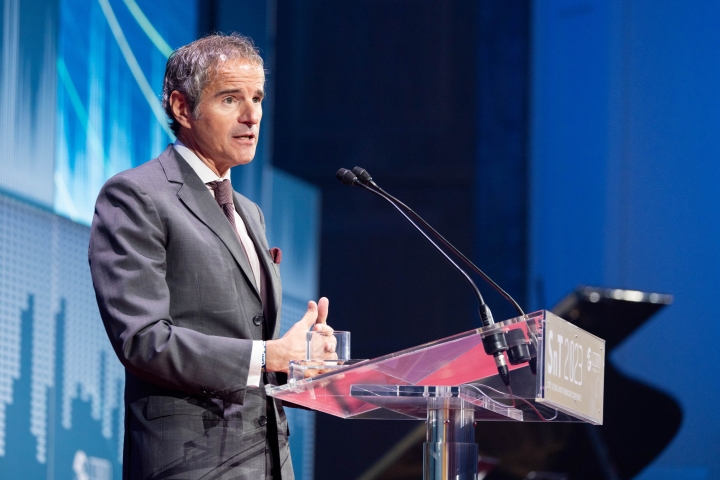
Rafael Grossi, Director General of the International Atomic Energy Agency (IAEA)

Behind the scenes at SnT2023
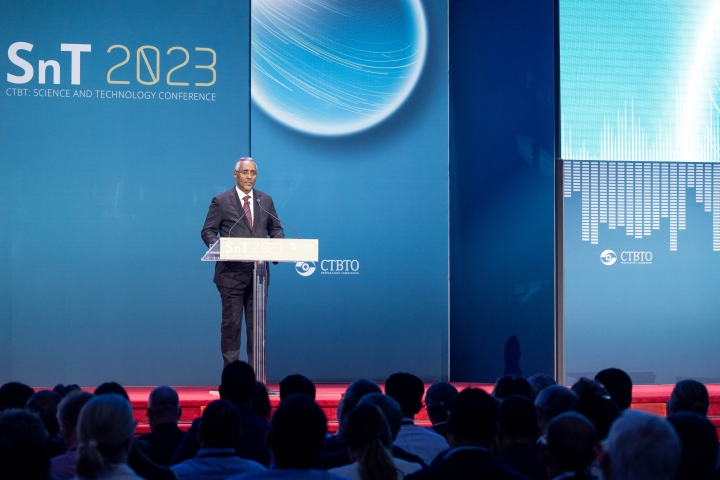
Abshir Omar Jama Huruse, Minister of Foreign Affairs, and International Cooperation of Somalia delivering remarks
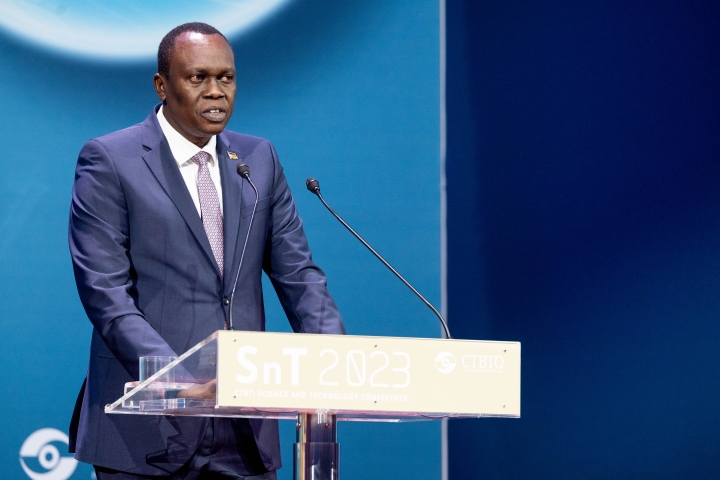
Mayen Dut Wol, Undersecretary of the Ministry of Foreign Affairs, and International Cooperation of South Sudan

Audience during high-level opening session
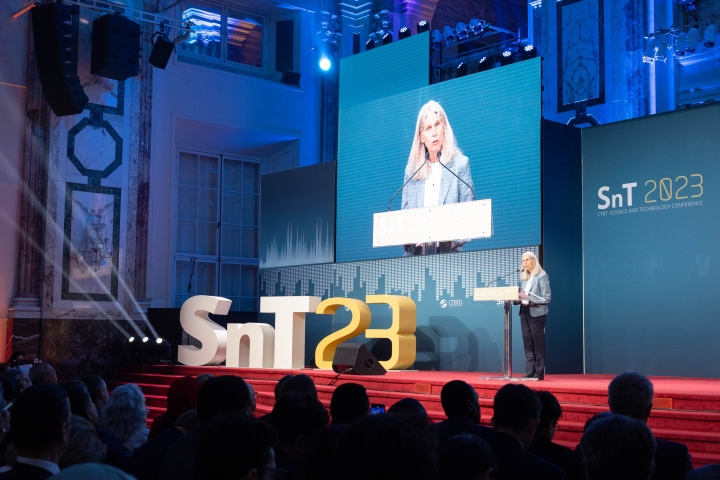
Jill Hruby, Under Secretary for Nuclear Security of the United States Department of Energy and Administrator of the National Nuclear Security Administration (NNSA)
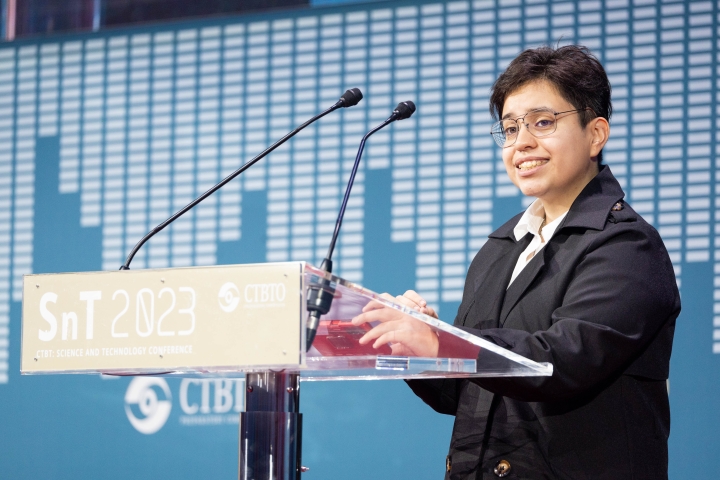
Alinne Olvera Martínez, youth representative and alumna of CTBTO Mentoring Programme
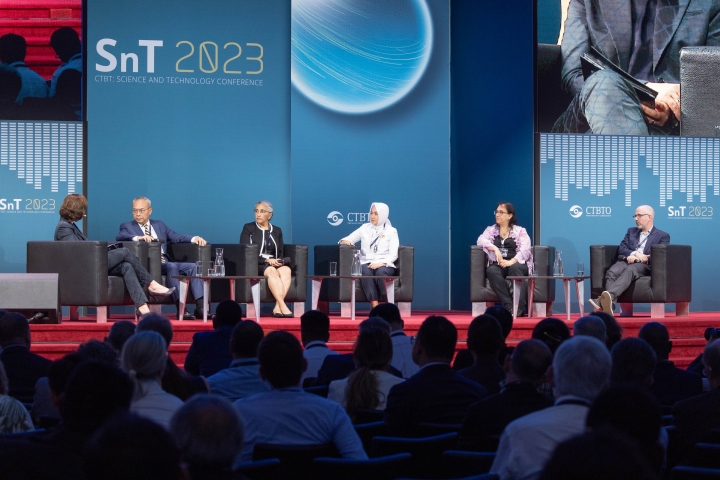
SnT2023 high-level panel discussion, featuring Xyoli Pérez Campos, IMS Director

Musical interlude
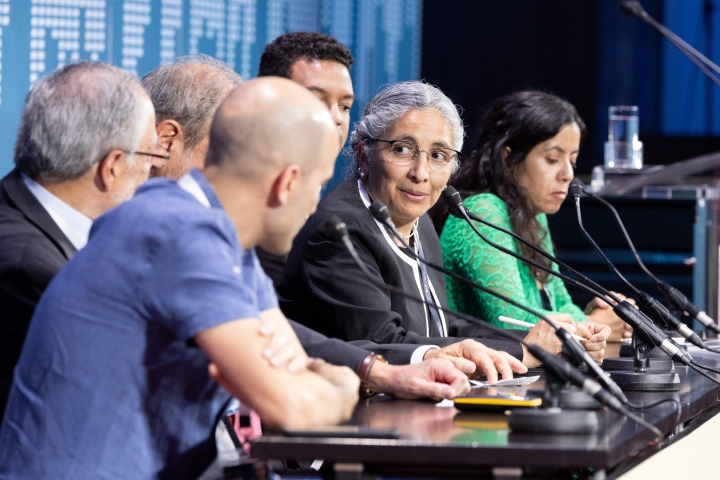
Spanish-speaking panel at SnT2023
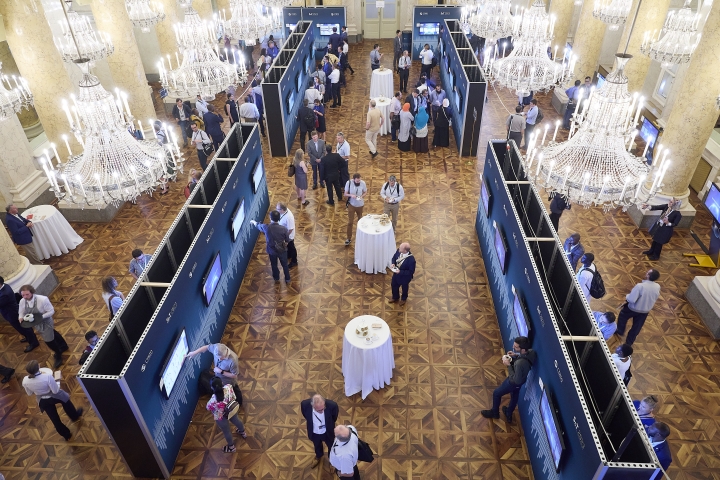
Bird-eye view of hall where 455 e-Posters, digital posters, are being presented at SnT2023
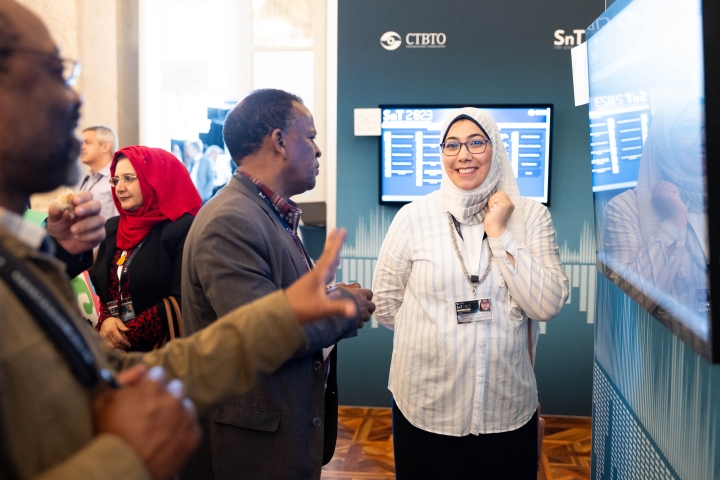
e-Poster presenter speaking to participants
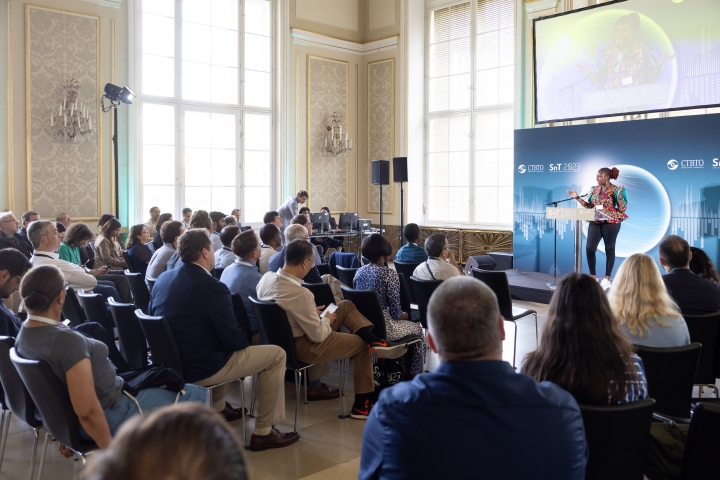
Lightening talk, one minute preview of e-Poster, in progress
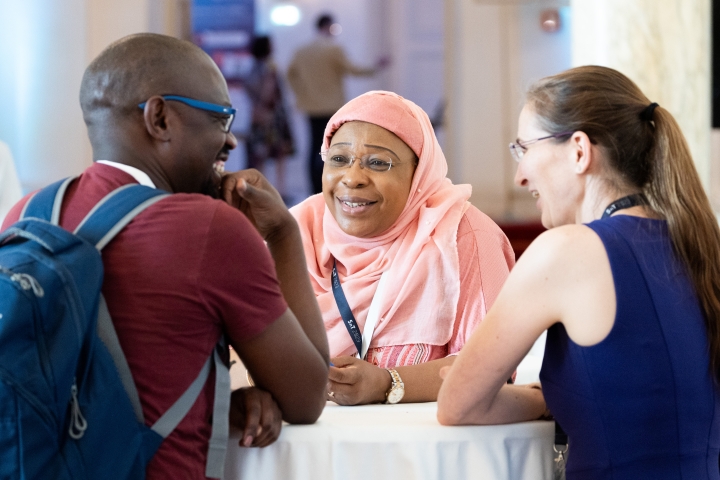
Zeinabou Mindaoudou Souley, IDC Director speaking to staff

NDC-in-a-Box side event, featuring developers and users of the software
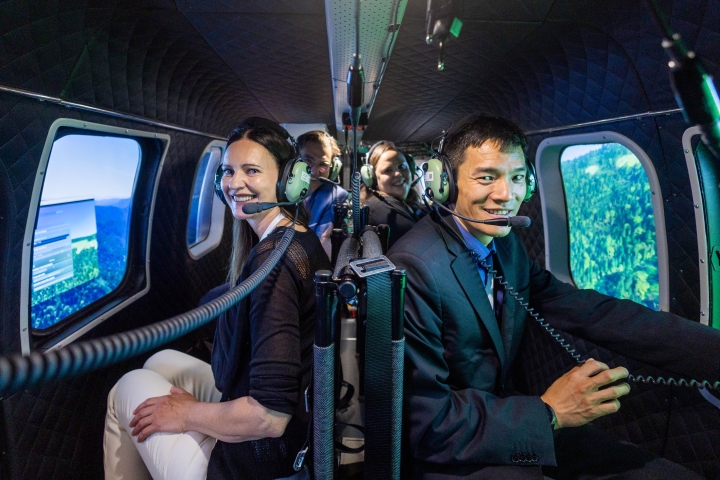
Participants taking part in OSI flight simulation session
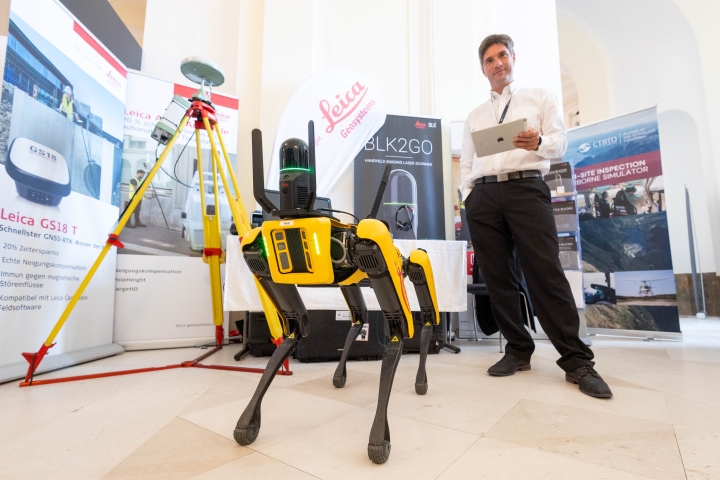
Robot dog to be used for inaccessible inspections during on-site inspection after entry into force of CTBT
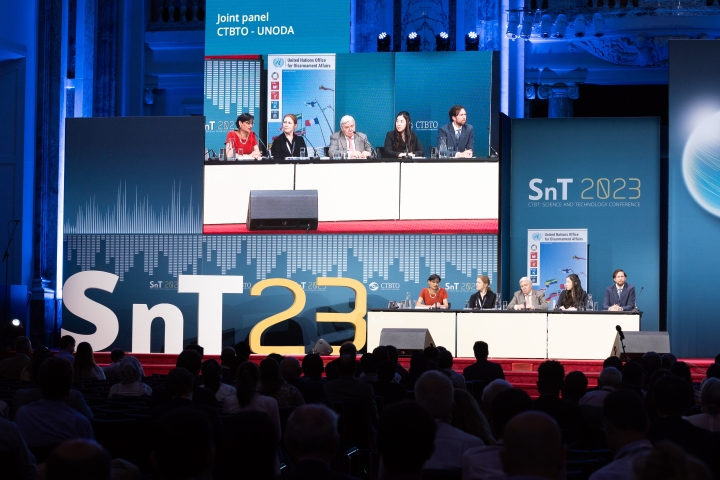
CTBTO/UNODA joint panel, featuring Oleg Rozhkov, OSI Director
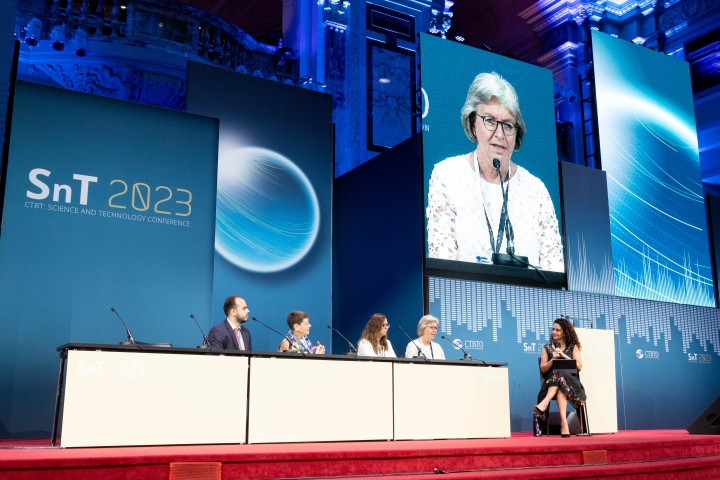
Panel on Promoting Female and Young Experts in STEM, featuring Anne Lyke, Founder of Young Professionals Network (YPN)
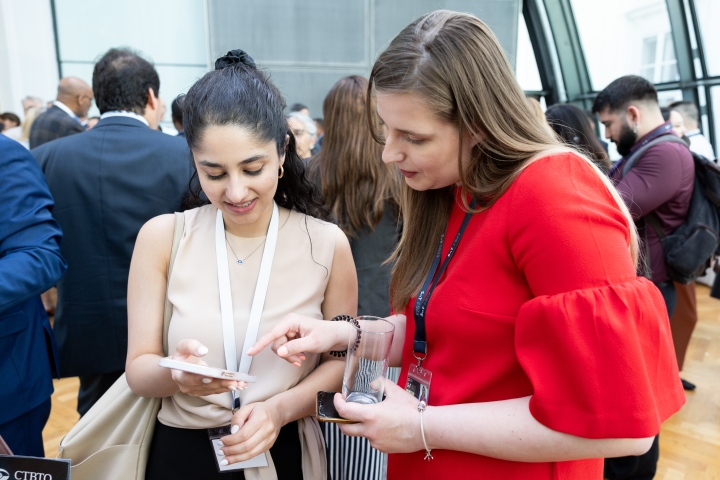
Young participants on margins of SnT2023
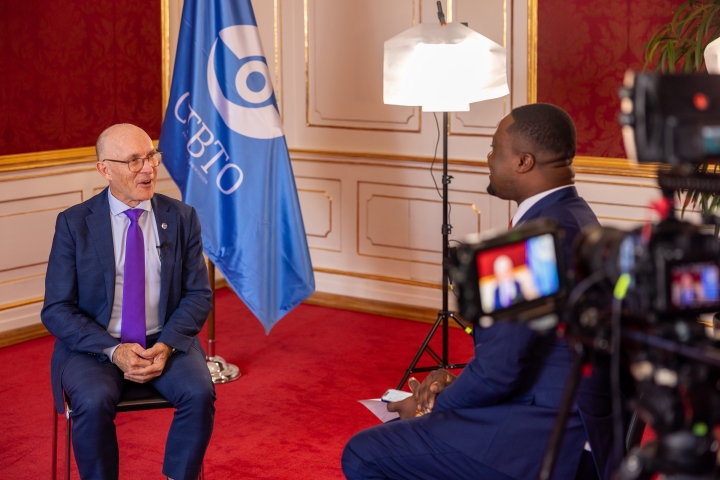
Floyd being interviewed by Ghana’s GHOne TV

